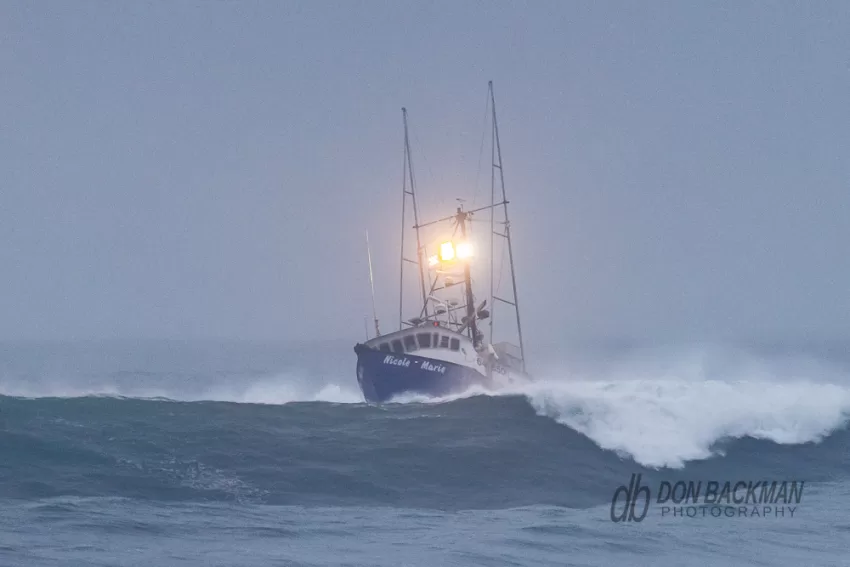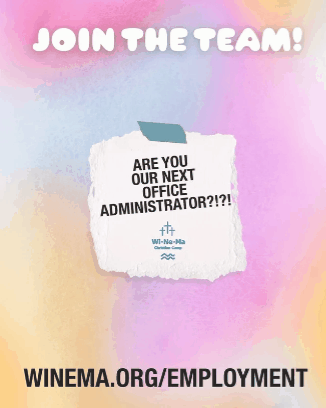Story & Photos By Don Backman
Did you know that Garibaldi, Oregon produces some of the best Dungeness crab? This small-town port has taken advantage of its close proximity to the ocean by employing new techniques and using smaller boats to earn the honor of having the lowest Dungeness crab dead loss of any port, anywhere. Experts from around the world have come to Garibaldi to see how they manage it. Dead loss is the almost inevitable result of fishing; some crabs tend to die on the boat before getting to port. Reducing this is good for the fishery and good for the boat.
Local fisherman Bob Browning, Captain of the Lady Lee, who also serves as a Port of Garibaldi Commissioner, sat down with the Tillamook County Pioneer to talk about the crabbing fleet. Locals and visitors alike are familiar with the boats venturing out over the Tillamook Bay bar to face the winter seas and have seen the glowing lights out at sea at night. Debra and Gary Motsinger, owners of the Two Captains and the Kilchis, who were out of town, answered questions via messenger.
Things have changed since the days of frozen crab. Now, you can find live Dungeness crab around the world. “We mostly sell to the live crab market,” Browning explained. “It’s important that the crab be kept alive and in good condition.” At Garibaldi, they bring in a better product and get paid more for the crab. This means that the commercial crab fishermen also bring in more money to the local economy.
One big advantage that Garibaldi has is the fleet is able to duck out quickly when there is break in the winter weather to harvest crab. The smaller boats that are able to consistently cross the shallow bar fill up quickly. This means a faster turn around and the crab doesn’t sit in the hold as long as it might with a larger boat, such as those from Newport or the Columbia River. “Most of our boats might be out one or two days,” Browning pointed out. “The big boats might be out for a week.” Browning also pointed out that the Tillamook Bay bar crossing is shallow at the end and the bigger boats often don’t like to cross.
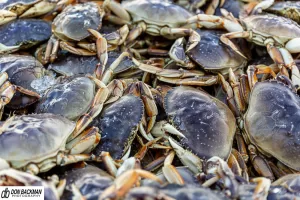 The live crab market used to be primarily local with a few Portland businesses buying crab here Now, you can find Garibaldi Dungeness crab across the nation and overseas. Many people think that the live crab all goes to China, but Browning explained that isn’t the case. “China buys a lot. But there’s a lot of domestic markets.” In addition, he added that many Portland (commercial) buyers come down to buy live crab from Tillamook Bay Seafood, which is owned and operated by the local Coon family. “The Shriner’s crab feeds get their crab there, too.”
The live crab market used to be primarily local with a few Portland businesses buying crab here Now, you can find Garibaldi Dungeness crab across the nation and overseas. Many people think that the live crab all goes to China, but Browning explained that isn’t the case. “China buys a lot. But there’s a lot of domestic markets.” In addition, he added that many Portland (commercial) buyers come down to buy live crab from Tillamook Bay Seafood, which is owned and operated by the local Coon family. “The Shriner’s crab feeds get their crab there, too.”
Browning explained that the Coon family invested a lot of money into the new building and equipment for Tillamook Bay Seafoods. The fishing fleet has also adapted with many boats using new equipment to help keep the crab in the best condition. He also credits the young and upcoming captains in the fleet for embracing much of the progress. The new captains have really taken to the high-quality market. “You need good water circulation,” he explained. “The crabs need to be handled properly. The water needs air circulation like an aquarium. Some boats have refrigeration systems to cool the crab.”
Garibaldi is home to approximately twenty local boats,” Browning said. “And five or six out of town boats work out of here. Crab fishing is a viable and sustainable industry that brings a lot of money to the Oregon Coast.”
What does it take to be a commercial crabber? Debra and Gary Motsinger of the Kilchis and Two Captains discussed the business of operating a commercial fishing boat in today’s fishing economy. “A boat such as the Two Captains would cost around $500,000,” Gary Motsinger explained, “with another 500k for a crab permit of 500 pots, and all of the Crab gear another 200k. The boat needs to catch about $300,000 worth of crab to break even. Operating expenses are around $150,000 for insurance, fuel, bait, and lost gear per season. The crew gets 54% so once the boat catches around 300,000 worth of crab, the expenses are covered. Obviously, the price of entry goes way up or down depending on boats and permits. Vessel prices are as high as 3.5 million without permit.”
Commercial fishing is a lifestyle. “The season dictates your life,” Debra explained. “You can almost never make plans way in advance, and when Gary was running the boat, he was basically gone all summer during albacore season. When the weather started getting nice, he left, and when it started getting bad, he came back. With that being said, after doing that, he would’ve probably never been able to go back to a 9 to 5. The thrill of the hunt and the excitement of being on them is second to none.”
Crabbing has changed over the years. Gary Motsinger recalls that in the 90’s crabbing wasn’t very profitable. “It started getting better and better and more people entered the fishery and then it was switched to limited entry. People got bigger boats and fished more pots and the pressure just got harder and harder. Now the fleet is severely over capitalized, and the bulk of the crab is caught in just a few weeks versus months. One little hiccup in the beginning can cost you half your season.”
Fortunately, the Oregon Coast is divided into zones. Browning explained that with a staggered opening, boats registered to fish out of the ports in the zone get to fish for a month before boats from other zones can join them. This gives the local fishing fleet a chance to compete for the early season crab market.
Oregon Department of Fish and Wildlife oversees Oregon’s commercial crabbing seasons. Regulations require boats to have permits, and there are three tiers – -200, 300, and 500 pots. Pots need to be constructed with exits for undersized crab to be able to escape, and they must have ports tied closed with cotton twine that rots away within 45 days, allowing the ports to open so marine life that enters the pot can escape. Each pot must have an identifying tag identifying the owner or the vessel attached to the first buoy from the pot. The industry is working to reduce marine live entanglements and there is an active derelict pot retrieval program.
•During the 2021 – 2022 season, the most recent available on the ODFW website, crabbers harvested approximately 17.2 million pounds of Dungeness crab into Oregon ports coastwide.
•These landings equated to $91.5 million ex-vessel value, the highest grossing season on record by more than 17 million dollars.
•The average price per pound peaked at $7.87 in May and came in at $5.33 across the entire season, the highest average price per pound for any season on record.
•In total, 310 different permit holders landed crab on 5,947 separate fish tickets into Oregon ports from the ocean and Columbia River.
Next time you see the crab boats heading out of the bay, crossing the bar at Barview Jetty, or their lights glowing out at sea on a frigid winter’s night, you know that the live crab that comes from Garibaldi is the best. There’s a fleet of hard-working professionals out there bringing the crab to our tables.
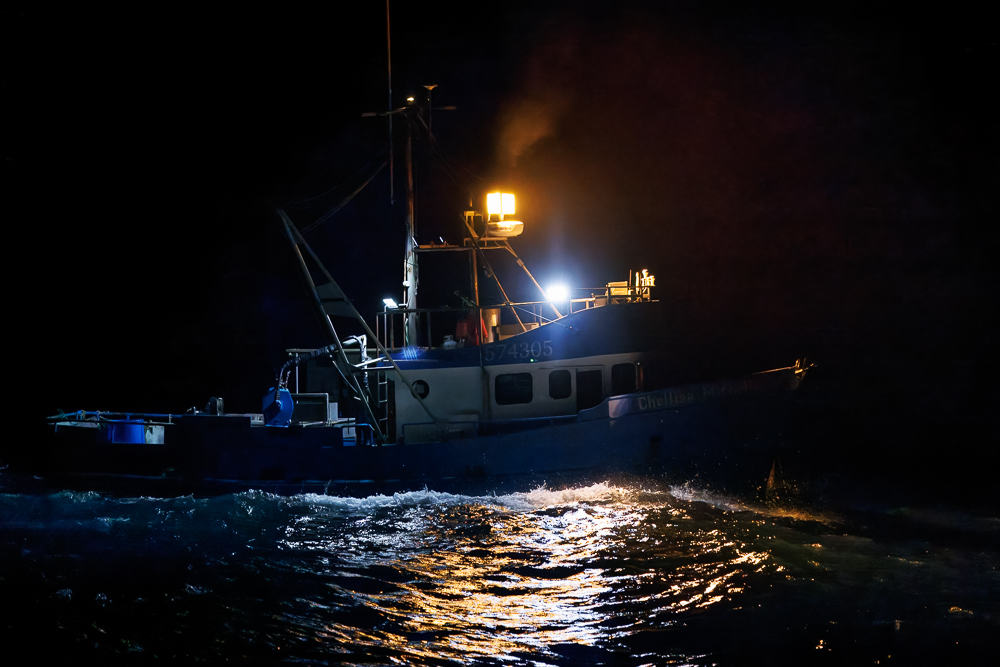
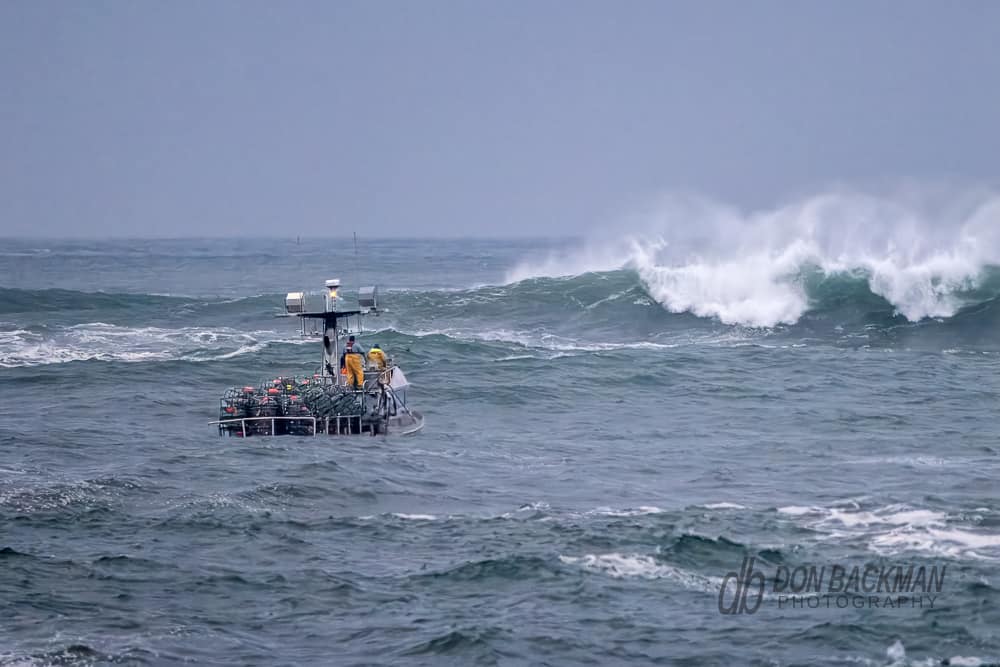
For more of Don’s photos – see his website www.donbackmanphoto.com. Or, stop by Seaquest Treasures in Rockaway Beach for framed prints of Don’s photos or contact him at donbackmanphoto@gmail.com.

